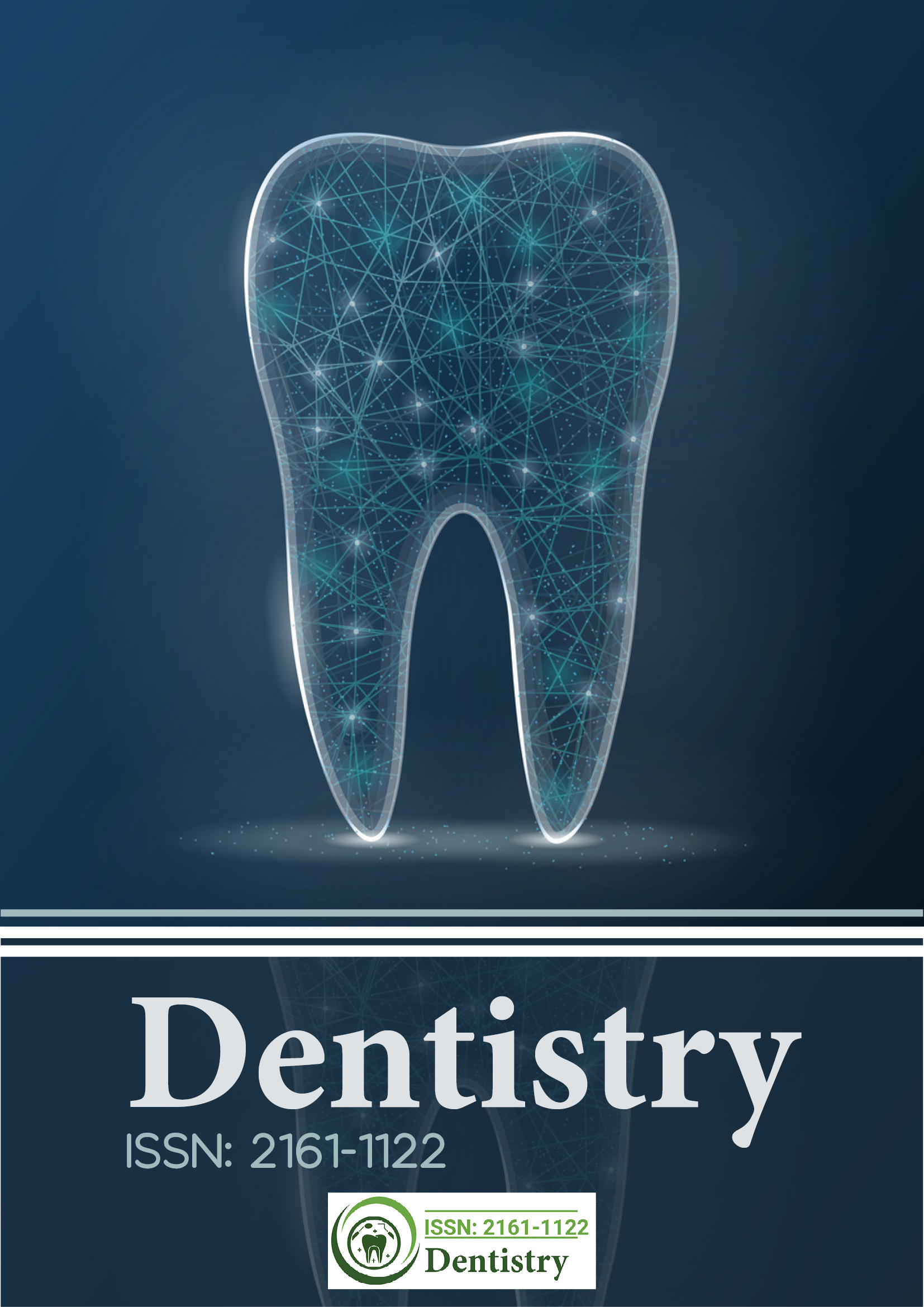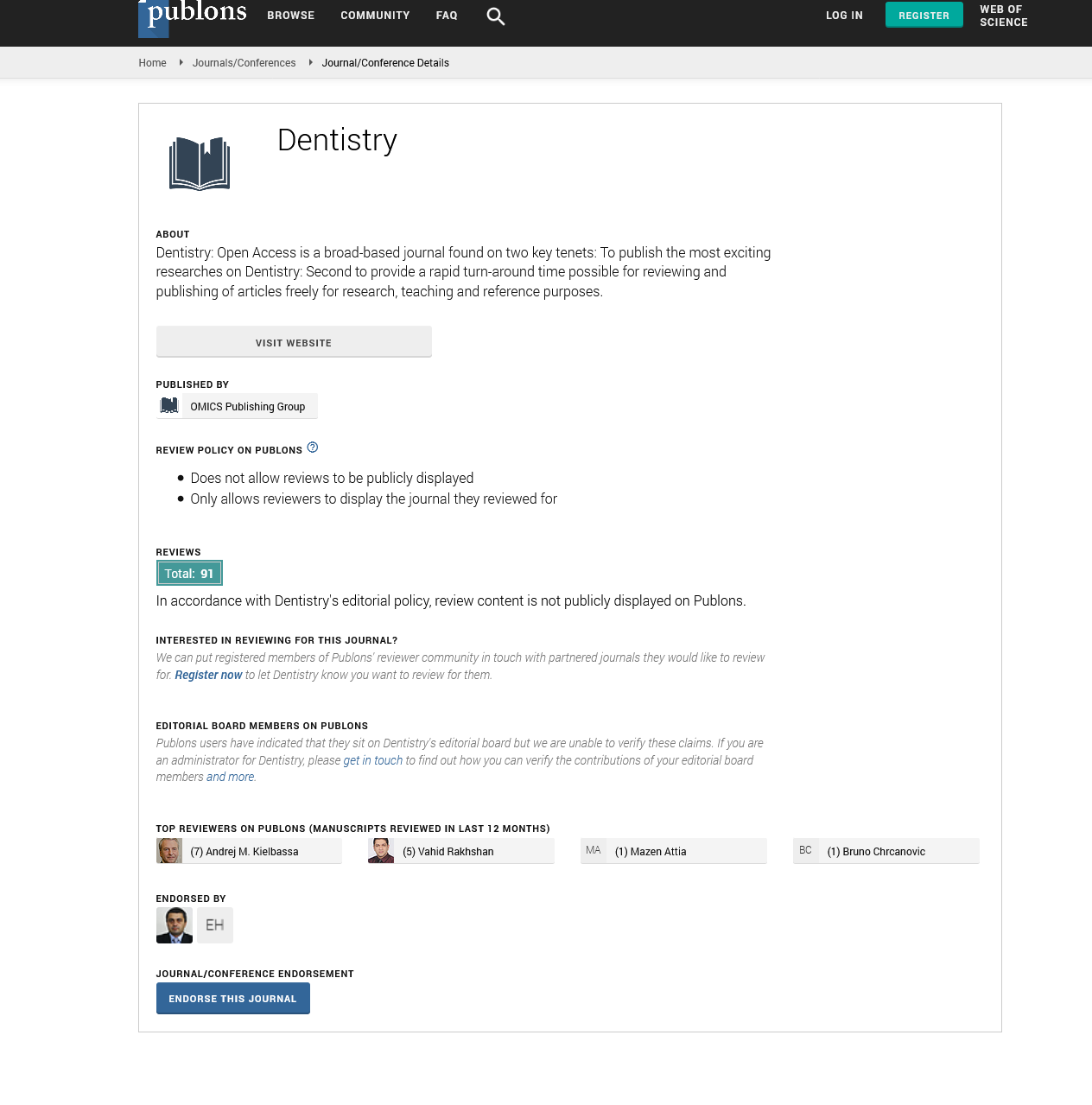Citations : 2345
Dentistry received 2345 citations as per Google Scholar report
Indexed In
- Genamics JournalSeek
- JournalTOCs
- CiteFactor
- Ulrich's Periodicals Directory
- RefSeek
- Hamdard University
- EBSCO A-Z
- Directory of Abstract Indexing for Journals
- OCLC- WorldCat
- Publons
- Geneva Foundation for Medical Education and Research
- Euro Pub
- Google Scholar
Useful Links
Share This Page
Journal Flyer

Open Access Journals
- Agri and Aquaculture
- Biochemistry
- Bioinformatics & Systems Biology
- Business & Management
- Chemistry
- Clinical Sciences
- Engineering
- Food & Nutrition
- General Science
- Genetics & Molecular Biology
- Immunology & Microbiology
- Medical Sciences
- Neuroscience & Psychology
- Nursing & Health Care
- Pharmaceutical Sciences
Commentry - (2022) Volume 12, Issue 1
Note on Periodontitis
Ravignani Sukla*Received: 30-Dec-2021, Manuscript No. DCR-22-585; Editor assigned: 03-Jan-2022, Pre QC No. DCR-22-585; Reviewed: 17-Mar-2022, QC No. DCR-22-585; Revised: 24-Jan-2022, Manuscript No. DCR-22-585; Published: 31-Jan-2022
Description
Periodontitis is a non-destructive disease that causes inflammation of the gums. The most common form of gingival inflammation, and overall the most common form of periodontitis, is the reaction to a bacterial biofilm known as plaque-induced plaque that adheres to the tooth surface. Most forms of periodontitis are caused by plaque. Some cases of gingival inflammation do not progress to periodontitis, but periodontitis is always preceded by gingival inflammation. Periodontitis is reversible with good oral hygiene. However, without treatment, gingival inflammation can progress to periodontitis, which causes tissue destruction and bone loss around the teeth. Periodontitis can ultimately lead to tooth loss. Gingitis is a type of periodontitis that causes inflammation and bleeding without losing bone mass.
Each tooth is divided into four gingival units: mesial, centrifugal, cheek, and tongue, with a rating of 0 to 3 based on the gingival index. Then average the four scores and gives each tooth a separate score. Periodontitis The diagnosis of gingival inflammation is made by the dentist. Diagnosis is based on clinical evaluation data obtained during a comprehensive periodontal examination. Either a qualified dental hygienist or a dentist can perform a complete periodontal examination, but it is the dentist's responsibility to interpret and diagnose the data. A comprehensive periodontal examination consists of a visual examination, a series of radiographs, gingival probing, determination of the degree of current or past damage to the periodontal tissue, and a comprehensive review of medical and dental history.
A dental hygienist or dentist can check the symptoms of periodontal disease and check the amount of plaque in the mouth. A dental hygienist or dentist looks for signs of periodontitis using x-rays or periodontal probes and other methods. If gingival inflammation does not respond to treatment, you may need to refer to a periodontist who is a specialist in gingival and bone diseases surrounding teeth and dental implants.
Periodontal disease can be prevented with regular oral hygiene such as daily brushing and dental floss. Mouthwashes containing hydrogen peroxide, saline, alcohol, or chlorhexidine can also be used. A 2004 clinical study highlighted the beneficial effects of hydrogen peroxide on gingival inflammation. Vibrating brushes can reduce the risk of periodontitis compared to manual brushing. Although considered to be a treatment for periodontitis rather than a prophylactic treatment for periodontitis, the American Dental Association has shown that a rigorous plaque control program with periodontal scaling and curettage is also useful.
In a 1997 review of efficacy data, the US Food and Drug Administration (FDA) provided clear evidence that toothpaste containing triclosan is effective in preventing periodontitis. In 2017, the FDA banned triclosan in many consumer products, but put it in toothpaste for its effectiveness against gum inflammation. In 2019, under pressure from health advocates, Colgate completely removed triclosan from the last toothpaste on the market, including triclosan. Plaque removal is the focus of treatment.
Treatment is aimed at reducing oral bacteria and can take the form of regular home visits to a dentist with adequate home oral hygiene. Therefore, some of the methods used to prevent gingival inflammation can also be used to treat overt gingival inflammation, such as: Scaling, root planning, curettage, chlorhexidine or hydrogen peroxide mouthwash and dental floss. Interdental brushes also help get rid of pathogens. Electric toothbrushes are more effective at reducing illness than manual toothbrushes.
Citation: Sukla R (2022) Note on Periodontitis. J Dentistry. 12:585.
Copyright: © 2022 Sukla R. This is an open-access article distributed under the terms of the Creative Commons Attribution License, which permits unrestricted use, distribution, and reproduction in any medium, provided the original author and source are credited

